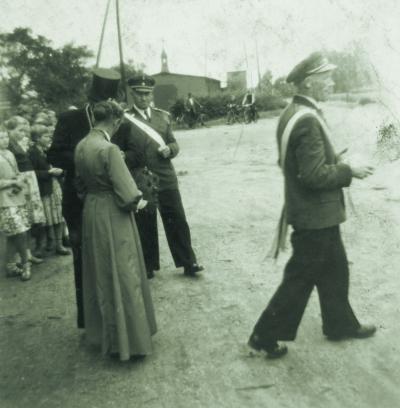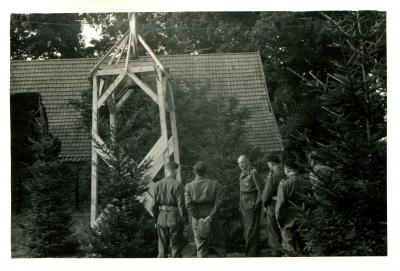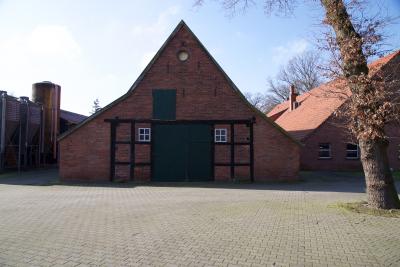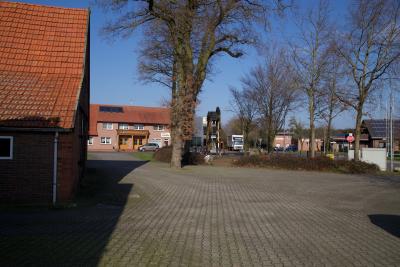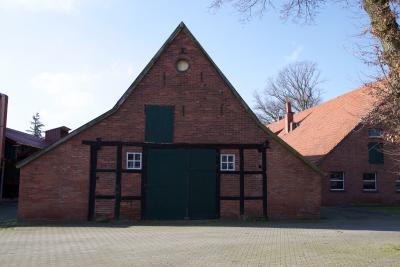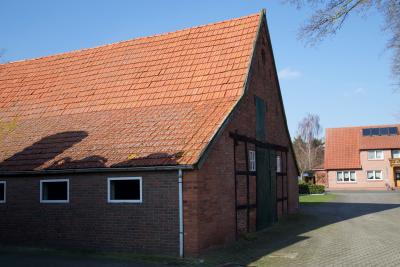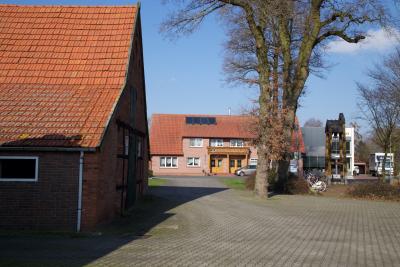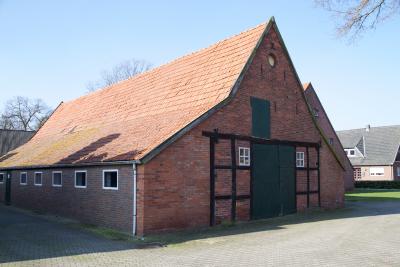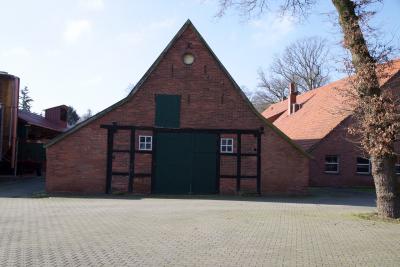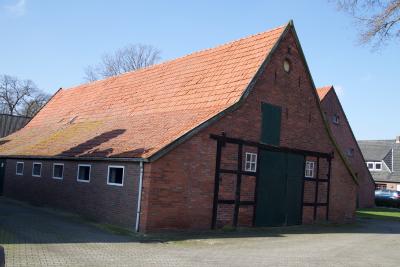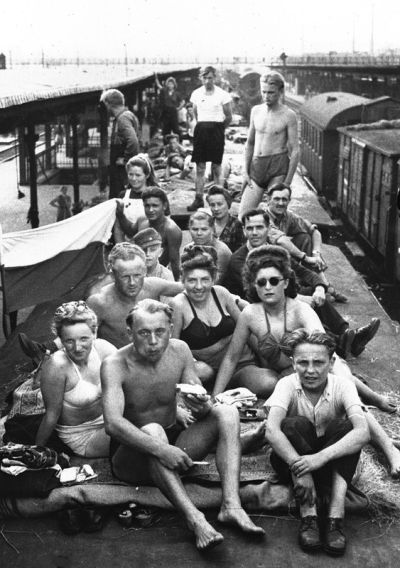Kacperkowo 1945/46 – When a village in Emsland was Polish
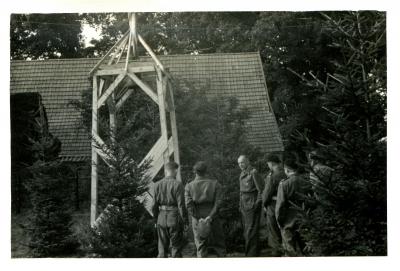
For all those who had been dragged from their homeland as former prisoners of war, concentration camp prisoners or forced labourers, the end of the Second World War meant the possibility of going home. However, because Soviet Russia occupied part of the former Polish territories, many Polish civilians refused repatriation to their homeland for political reasons. As a result, they were initially housed in camps and given the status of so-called “displaced persons” (DPs). Over time, their numbers grew so greatly that the British military government cleared the Germans out of several villages in Emsland so that they could settle homeless Poles there. One of these places was the village of Neuvrees, which today is a district of the municipality of Friesoythe.
The news that the place was to be cleared of German inhabitants reached the residents of Neuvrees on 27 May 1945 before the official statement had been released by the military: The residents had to leave their houses immediately and stay with friends and relations in the neighbouring communities. On the very same day, the Polish DPs moved into their houses – and stayed there for the next year and a half, until December 1946.
During these months, the Poles who now lived there changed the name of the village to Kacperkowo.[1] According to the chronicle of Neuvrees, this was the name of a community in Poland. The streets were also given Polish names.[2]
Polish life in Kacperkowo
The inhabitants of Kacperkowo were taken care of by the British military government who, along with food, also provided material resource. Over the course of 1946, however, this supply dwindled. As a result, there were more and more thefts from neighbouring communities as the villagers tried to ensure their own food supply. Another problem was the lack of work for the Polish DPs, who often spent their time drinking home-brewed alcohol as a result. Arguments that broke out between the drunken Poles increased and ended not infrequently in physical fights. Because of the tense situation, the Poles formed their own police force, equipped with old German weapons and black uniforms.
The relationship between the new and the old residents of the village was also occasionally marked by tension. But often positive relationships and even friendships developed as well. Shortly after the end of the war, Maria Roß, née Roberts, was a young girl. The contemporary witness, who died in 2017, had very fond memories of the Poles to the end: They held celebrations which the German children of the village were allowed to watch. The atmosphere at these events was lovely, she recalled.
For the Neuvrees farmers, the resettlement made their day-to-day working life much harder: Every day, they had to travel on foot or by bike from their temporary quarters to their own yards so that they could tend the fields and their livestock. It was not until autumn 1945 that they were allowed to live in shelters in the stall buildings so that they were close to their yards. In principle, the following applied: “The period of occupation was a heavy burden for the people but, in contrast to people in the cities, no one in Neuvrees had to starve.”[3]
The church set up by the Poles, which the Germans called “Polish Church”[4] became a meeting point for German and Polish inhabitants of the village. It was located in the Eleonorenwald barracks of a company from Oldenburg. Polish forestry workers had been housed there during the war. When the Polish enclave was formed, the barracks were moved to Feldstraße/ ulica Gen Sikorskiego in the heart of the village and a sacristy was subsequently added. The planks to build it were obtained from the people of Neuvrees who criticised the move. The Poles also erected their own belltower whose bell came from what is today the village of Spahnharrenstätte. During mass, the barracks were usually full to overflowing; many people had to stand because there were not enough seats. Once the Poles moved out, the people of Neuvrees tried to keep the church community going. With this in mind, they bought the building. In 1956, the barracks church moved to the Deepstreek, where it would soon be used as accommodation for refugees from the East instead of as a church. In December 1946, the Polish DPs had to leave Kacperkowo for the final time. The people of Neuvrees, who were now able to return to their houses, held a celebration on the very same evening; there was a joyous procession through the village with a brass band, as reported by the chronicle of the end of the Polish Kacperkowo in Emsland.[5] Today, there are no reminders of the Poles’ presence between 1945 and 1946, but the former Polish Church is still in the same place. It and the Poles of Kacperkowo are remembered in the chronicles and parades relating to the history of the village.
Andrea Sarah Lorenz, December 2018
Literature:
Chronikausschuss „225 Jahre Neuvrees“: 225 Jahre Neuvrees. Dorf- und Familienchronik. Werlte 2013.
Festausschuss: 200 Jahre Neuvrees 1778 – 1988. Dorf und Familien-Chronik. Werlte, 1988.
[1] The literature shows two spellings: "Kasperkowo" and "Kacperkowo". It is not possible to trace which of the two was used by the DPs. The spelling with the "c" is used in this text.
[2] Chronikausschuss „225 Jahre Neuvrees“: 225 Jahre Neuvrees. Dorf- und Familienchronik. Werlte 2013, p. 140.
[3] Chronikausschuss „225 Jahre Neuvrees“: 225 Jahre Neuvrees. Dorf- und Familienchronik. Werlte 2013, p. 141.
[4] Festauschuss: 200 Jahre Neuvrees 1778 – 1988. Dorf und Familien-Chronik. Werlte, 1988, p. 400.
[5] Festauschuss: 200 Jahre Neuvrees 1778 – 1988. Dorf und Familien-Chronik. Werlte, 1988, p. 400.
